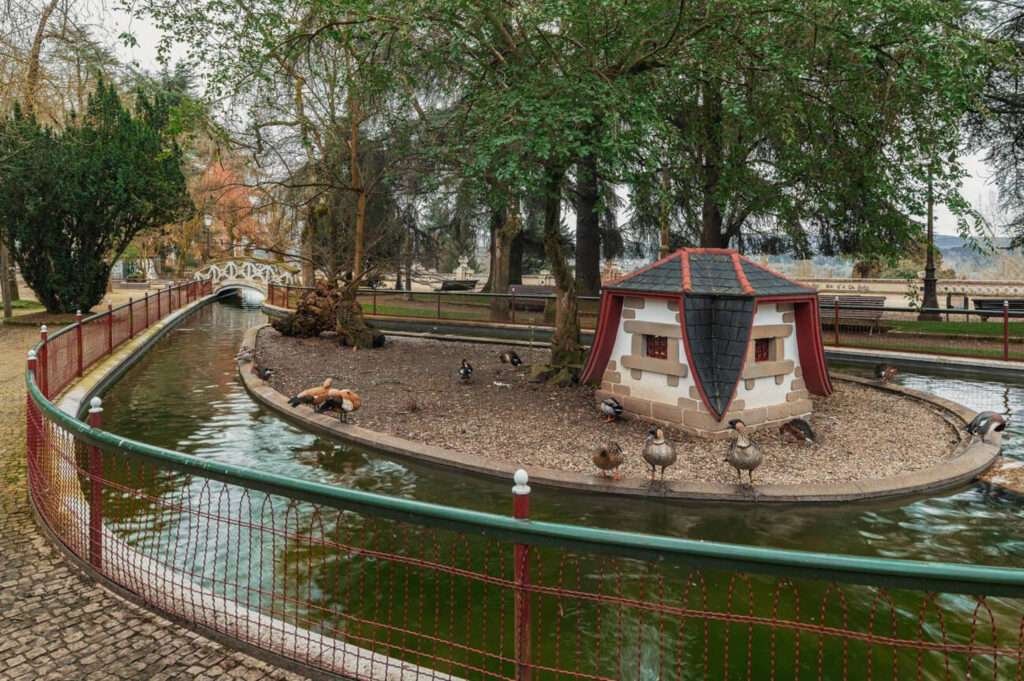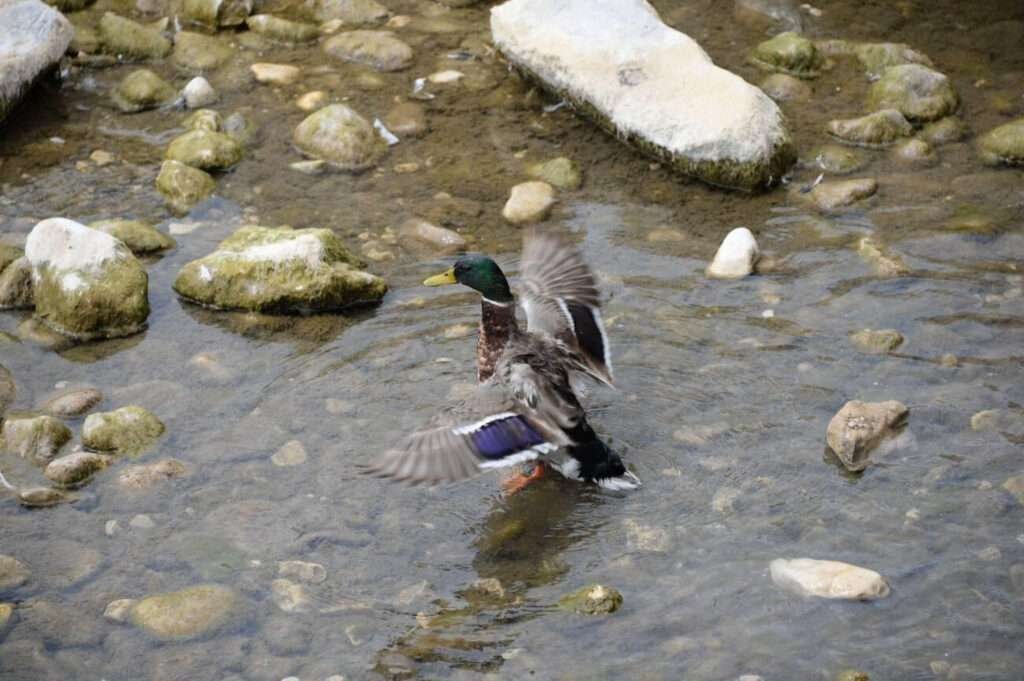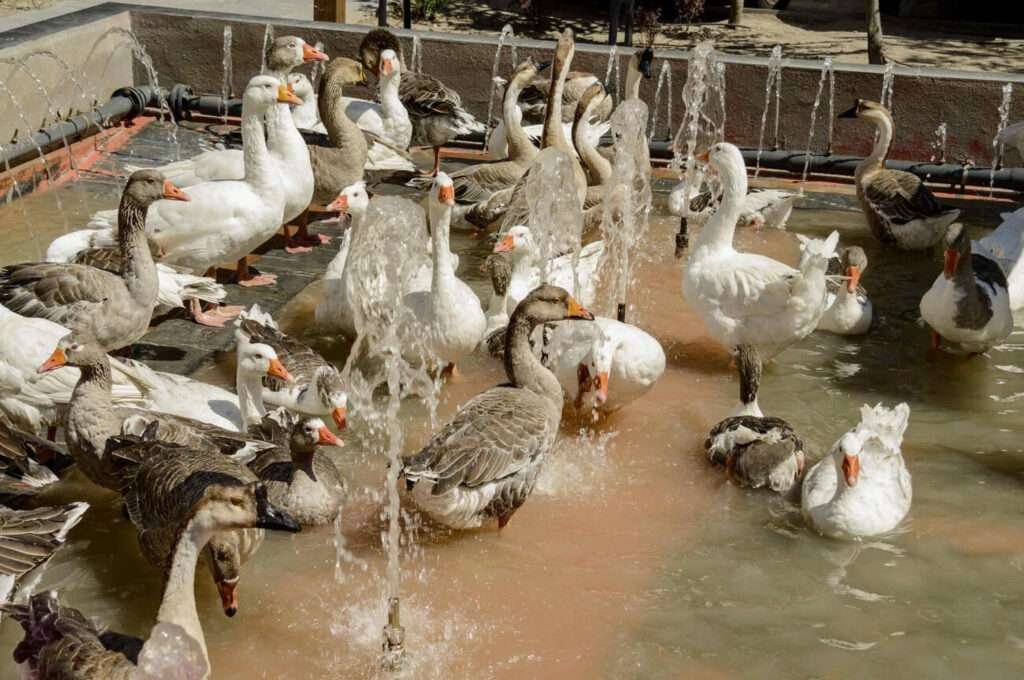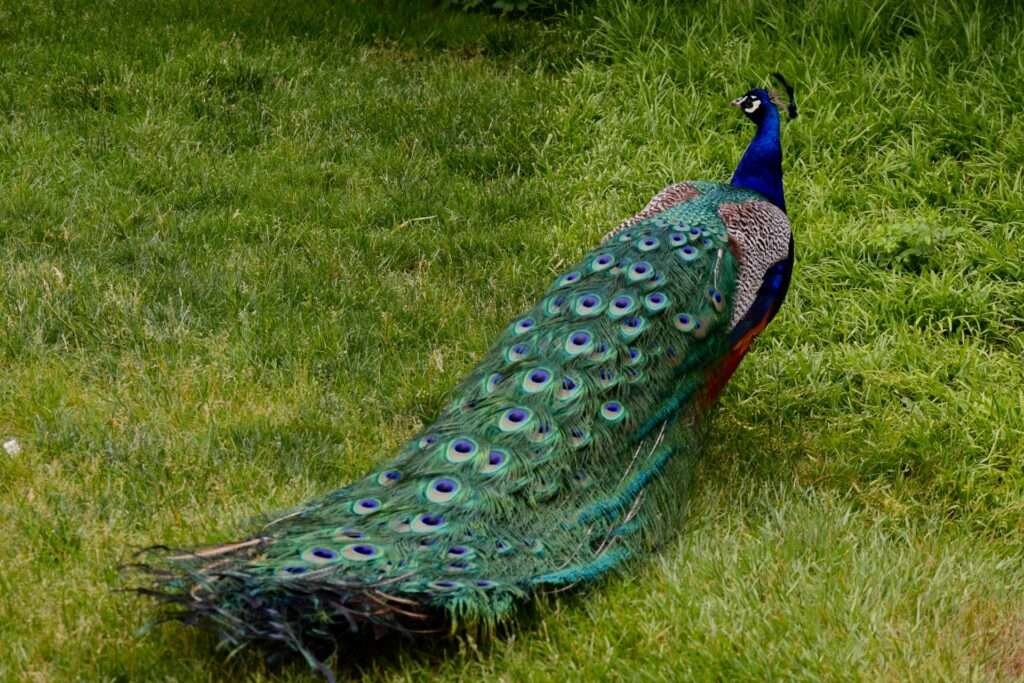Spain hosts a variety of duck species, both native and migratory. These birds are found in diverse habitats, from wetlands to coastal areas.
Ducks play a significant role in Spain’s biodiversity, inhabiting regions such as the Ebro Delta and Doñana National Park. These areas provide critical shelter and breeding grounds for numerous duck species. Bird enthusiasts and nature lovers often visit Spain to observe these waterfowl in their natural settings.
Conservation efforts are vital to maintaining the populations of these ducks, which are often threatened by habitat loss and climate change. Understanding and protecting Spain’s duck species helps preserve the ecological balance and enhance the country’s natural heritage.
Introduction To Spain’s Avian Treasures
Welcome to the vibrant world of Spain’s avian wonders! With its diverse landscapes, from the green northern regions to the Mediterranean coastlines, Spain is home to an impressive array of bird species. Among these feathered inhabitants, ducks hold a special place, gracing wetlands and lakes with their presence. Let’s embark on a journey to explore the diverse ducks and their role in Spain’s ecosystems.
Diversity Of Spanish Wildlife
Spain’s wildlife is a mosaic of color and life. The country’s geographical diversity supports a wide range of habitats. From the Pyrenees to the Sierra Nevada, bird enthusiasts can find a variety of species. Ducks, with their multiple breeds, are a major highlight. Each species brings unique behaviors and beauty to Spain’s wildlife tapestry.
- Mallards: Common in wetlands, showcasing iridescent green heads.
- Red-crested Pochards: Vibrant with redheads, favoring lakes.
- Shelducks: Striking in appearance, found along the coast.
Significance Of Ducks In Ecosystems
Ducks play a crucial role in maintaining healthy ecosystems. They contribute to the balance of aquatic environments and support plant growth. They act as natural pest controllers and seed dispersers. Their nesting habits also create habitats for other wildlife, making them essential for ecological harmony.
| Role of Ducks | Benefit to Ecosystem |
|---|---|
| Pest Control | They eat harmful insects. |
| Seed Dispersal | They help plants spread. |
| Habitat Creation | They make homes for others. |
Historical Presence Of Ducks In Spain
The historical presence of ducks in Spain is a tapestry woven through time. These feathered inhabitants have been a part of Spanish landscapes for centuries. Their quacks and splashes resonate through the country’s rich history.

Ancient Records And Folklore
Ducks have been integral characters in Spanish tales and daily life since ancient times. Evidence of these birds exists in artifacts and literature, showcasing their societal role. Local myths often depict ducks as symbols of freedom and grace.
- Early cave paintings depict duck hunting scenes.
- Roman mosaics in Spain feature ducks, indicating their prevalence.
- Medieval manuscripts often mention ducks in fables.
Conservation Timeline
Spain’s commitment to duck conservation is evident in its establishment of numerous protected areas. Efforts to maintain duck populations have evolved over the years.
| Year | Action |
|---|---|
| 1918 | First, the bird protection law was enacted. |
| 1980s | Ramsar Convention adoption, wetland protection. |
| 1994 | National Parks expansion for habitats. |
| 2000s | EU Birds Directive implementation. |
These measures ensure that the quintessential image of ducks gliding across serene Spanish waters continues for generations. The timeline reflects a growing appreciation and dedication to these graceful birds.
Geographical Distribution Of Ducks
The Geographical Distribution of Ducks in Spain paints a vibrant picture of avian diversity. Spain’s landscapes offer a variety of ecosystems, each a haven for different duck species. Understanding where these birds thrive helps birdwatchers and nature enthusiasts pinpoint prime locations for observation.
Regional Habitats And Hotspots
Ducks in Spain find homes across diverse regions. Each area supports unique duck populations:
- Wetlands of Doñana National Park: A sanctuary for waterfowl.
- Albufera de Valencia: Home to large numbers of ducks year-round.
- Ebro Delta: Rich feeding grounds attract various species.
- Marismas del Odiel: Important for breeding and wintering ducks.
These hotspots boast high biodiversity, crucial for ducks’ survival. Birdwatchers flock here for spectacular views of these creatures in their natural habitats.
Migratory Patterns
Spain’s position between Europe and Africa makes it a key site for migratory ducks. Patterns include:
- Northern birds head to Spain to escape the cold.
- Species like the Northern Shoveler use Spain as a rest stop before flying to Africa.
- Many ducks return annually, following instinct and necessity.
Ducks’ arrival and departure are predictable, making Spain a year-round haven for birdwatching.
Spotlight On Native Duck Species
Spain’s waters are home to an array of beautiful ducks. Each species boasts unique features and habits. Let’s dive into the world of native Spanish ducks and discover the wonders they hold.
Red-crested Pochard
The Red-crested Pochard is a stunning bird. It has a bright red head and a black chest. This duck is often found in lakes and rivers across Spain.
- Scientific Name: Netta rufina
- Habitat: Freshwater wetlands
- Diet: Plants and small animals
| Red-crested Pochard Facts | |
|---|---|
| Size | Approximately 57cm in length |
| Wingspan | Up to 85cm |
| Breeding Season | April to June |
Marbled Teal
The Marbled Teal is a rare gem in Spain. It has a beautiful marbled brown pattern. These ducks are shy and hard to spot.
Conservation status: Vulnerable. We must protect their habitats.
- Look for them at dawn or dusk.
- They love quiet marshes.
- Listen for their soft quacking.
Rare And Endangered Ducks
Spain hosts some rare and endangered ducks that need urgent attention. These ducks are not just birds; they are vital for ecological balance.
Conservation Status
The Marbled Teal and White-headed Duck are critically endangered in Spain. Their populations have plummeted due to habitat loss, pollution, and hunting.
- Marbled Teal – Less than 500 left in the wild.
- White-headed Duck – Approximately 2,000 individuals are remaining.
Protection Efforts
Spain is taking steps to save these precious ducks. Key actions include:
- Creating protected wetlands.
- Banning harmful pesticides.
- Running breeding programs.
Protected wetlands offer safe homes for ducks. These areas are free from development and pollution.
Breeding programs help increase duck numbers. They ensure a healthy population for the future.
Duck Behavior And Social Structure
Duck Behavior and Social Structure provides fascinating insights into their daily lives. Ducks in Spain display unique behaviors and social interactions, particularly in their mating rituals and feeding habits. Understanding these patterns helps us appreciate these vibrant waterfowl.
Mating Rituals
Ducks in Spain engage in distinctive mating displays to attract partners. Males often perform elaborate dances or display their colorful feathers. These rituals are crucial for mate selection, ensuring only the fittest individuals reproduce.
- Colorful displays to catch attention
- Dances showcase strength and vitality
- Selection based on the fitness of the male
Feeding Habits
Feeding is a critical part of their daily routine. Ducks in Spain mostly feed on aquatic plants, small fish, and insects. They often feed in groups, which helps protect them from predators while foraging.
| Food Type | Details |
|---|---|
| Aquatic Plants | The main source of nutrients |
| Small Fish | Provides protein |
| Insects | Supplemental food for extra energy |
Group feeding ensures safety and efficiency.
Human Impact On Duck Populations
Human activities profoundly impact wildlife, and ducks in Spain are no exception. Changes to their environment affect their survival. Let’s delve into how our actions influence duck populations in Spain.
Habitat Destruction
Ducks rely on wetlands for food and nesting. Unfortunately, these areas face threats from human expansion. The construction of buildings and roads reduces natural spaces where ducks live. Agriculture also plays a part. Farmers drain wetlands for crops, leaving ducks without homes.
- Construction projects take over wetlands
- Agricultural activities lead to wetland drainage
- Ducks lose their natural habitats
Pollution
Water quality is essential for duck health. Yet pollution from factories and farms can poison the water. Ducks eat polluted food and water and get sick as a result. Plastic waste also poses a risk, as ducks can mistake it for food, which can be fatal.
| Source of Pollution | Impact on Ducks |
|---|---|
| Industrial waste | Poisons waterways |
| Agricultural runoff | Introduces harmful chemicals |
| Plastic waste | This leads to ingestion and entanglement |
Climate Change
Climate change alters weather patterns. This means less predictable seasons for ducks. They rely on cues from the environment to migrate and breed. If these cues change, ducks may not find suitable breeding grounds or might migrate at the wrong time.
- Weather patterns shift
- Ducks face breeding and migration challenges
- Populations can decline
Conservation Initiatives And Success Stories
Spain’s ducks are a delight for birdwatchers and a vital part of the ecosystem. Their survival depends on careful conservation. In recent years, Spain has seen inspiring success stories in duck conservation. Let’s dive into the initiatives that are making a real difference.
Breeding Programs
Managed breeding programs are vital for endangered duck species. They increase populations and genetic diversity. Here are key highlights:
- Controlled environments ensure high survival rates for ducklings.
- Experts monitor health and growth closely.
- Successful programs release ducks into the wild with care.
Wetland Restoration
Healthy wetlands are crucial habitats for ducks. Spain is working hard to restore these areas:
- Clean-up efforts remove pollutants and trash.
- Native plants are reintroduced to support food chains.
- Restored wetlands invite ducks back to their natural homes.
Birdwatching In Spain: A Guide
Spain’s diverse landscapes are a paradise for birdwatchers. From the wetlands of Doñana National Park to the high peaks of the Pyrenees, Spain offers an impressive array of habitats. Thousands of bird species find refuge here, making it a top destination for birdwatching enthusiasts.
Best Times And Locations
Spring and autumn migrations are peak times for birdwatching in Spain. The country’s geographic position provides a natural flyway for many migratory species.
Notable birding spots include:
- Doñana National Park: Home to the Iberian Lynx and various waterfowl.
- Extremadura: Famous for its large population of raptors.
- Ebro Delta: Offers a rich diversity of shorebirds.
- Pyrenees: A haven for high-altitude species.
For specific birding events, refer to local wildlife calendars.

Equipment And Etiquette
Proper gear enhances the birdwatching experience. Essential items include:
| Equipment | Use |
|---|---|
| Binoculars | For close-up views of birds in their natural habitat. |
| Field Guide | To identify species and learn about behaviors. |
| Camera | For capturing images without disturbing the birds. |
Follow these etiquette tips for a responsible birdwatching experience:
- Keep noise to a minimum to avoid scaring birds away.
- Stay on designated paths to protect natural habitats.
- Respect local regulations and private property boundaries.
- Use bird hides where available for minimal disturbance.
Culinary Traditions Involving Ducks
Spain’s culinary scene is as rich and diverse as its landscapes. Duck dishes stand out with a legacy of taste and tradition among the country’s gastronomic treasures. From Catalonia’s lush regions to Andalusia’s vibrant markets, duck is a staple ingredient that chefs and home cooks use to create mouth-watering delicacies.
Regional Dishes
Each Spanish region takes pride in its unique duck recipes. Here are some favorites:
- Catalonia’s ‘Pato con Peras’ – a savory duck with pears dish.
- Valencia’s ‘Arroz con Pato’ – a rich duck rice, cousin to paella.
- The Basque Country’s ‘Pato a la Naranja’ – duck with a zesty orange sauce.
Sustainable Practices
Spanish chefs prioritize environmental sustainability when preparing duck dishes. They often use locally sourced ducks, which supports local farmers and reduces carbon footprint.
| Practice | Benefit |
|---|---|
| Local sourcing | Boosts local economy |
| Seasonal ingredients | Ensures fresh flavors |
| Nose-to-tail cooking | Minimizes waste |
Connecting With Nature: Ducks In Spanish Culture
Connecting with Nature: Ducks in Spanish Culture invites us on a vibrant journey. Spain’s rich natural landscapes boast a wonderful array of birdlife, with ducks taking center stage. These feathered friends are common in Spanish wetlands and hold a special place in the heart of Spanish traditions.
Artistic Representations
Ducks have inspired Spanish artists for centuries. Their artistic representations range from ancient cave paintings to modern sculptures. In Spanish art, ducks symbolize freedom and grace.
- Paintings: Ducks appear in vivid brush strokes on canvases across Spain’s art museums.
- Sculptures: Public parks display duck sculptures, showcasing the bird’s importance in Spanish culture.
- Crafts: Artisans create duck-themed pottery and textiles, reflecting the species’ integration into daily life.
Festivals And Celebrations
Ducks are celebrated in festivals and local traditions across Spain. These events connect communities and celebrate the country’s natural heritage.
| Festival | Location | Date |
|---|---|---|
| Fiesta de San Antón | Madrid | January |
| Festival de los Patos | Valencia | August |
Each festival features duck-themed events, from parades to duck races. These celebrations highlight the bond between Spaniards and the natural world.
The Future Of Ducks In Spain
The destiny of ducks in Spain teeters on the edge of two very different ponds. On one side, there’s the thriving wetland ecosystem. On the other, the threat of habitat loss and pollution looms large. Active research and public engagement efforts are key to tipping the scales toward a brighter future for these feathered inhabitants.
Research And Monitoring
Continuous research paves the way for understanding ducks in their natural Spanish habitats. Experts collect data on duck populations, studying breeding patterns and migration routes. This information helps in making informed decisions about their protection.
Monitoring involves:
- Tracking numbers of different duck species
- Assessing the health of wetlands
- Identifying threats to their survival
Technology plays a vital role. Drones and satellite imagery allow scientists to observe ducks from afar, minimizing human interference. Conservationists use this data to craft effective strategies for safeguarding ducks.
Engaging The Public In Conservation
Public involvement is crucial for the ducks’ future. People must understand the importance of these birds. Conservation groups organize events to raise awareness. They invite everyone to join in the efforts to protect ducks.
Public engagement includes:
- Educational programs in schools
- Volunteer opportunities in wetlands
- Community-led habitat restoration projects
Simple actions can make a big difference. Families can visit wetlands to learn about ducks. Birdwatchers can share sightings with researchers, helping to track duck populations. Everyone can help keep water bodies clean, ensuring ducks have a safe place to live and thrive.
Frequently Asked Questions
What Kind Of Ducks Are In Spain?
Spain is home to various duck species, including the Mallard, Red-crested Pochard, and the White-headed Duck.
What Bird Is Native To Spain?
The Spanish Imperial Eagle is a bird native to Spain, known for its majestic presence and conservation status.
Why Are They Called Muscovy Ducks?
Muscovy ducks are named after the Muscovy Company, which traded them in Europe. Despite the name, they are native to Latin America, not Moscow.
What Is The Most Common Duck In Europe?
The most common duck found across Europe is the Mallard Duck. Widely recognized by its vibrant green head and yellow bill in males, this species frequents lakes and ponds throughout the continent.
Conclusion
Spain’s ducks truly capture the essence of the country’s diverse wildlife. From serene wetlands to bustling riverbanks, these birds vibrate every habitat. Whether you’re an avid birdwatcher or appreciate nature’s splendor, Spain’s feathered friends await. Discover their beauty on your next Spanish adventure.




